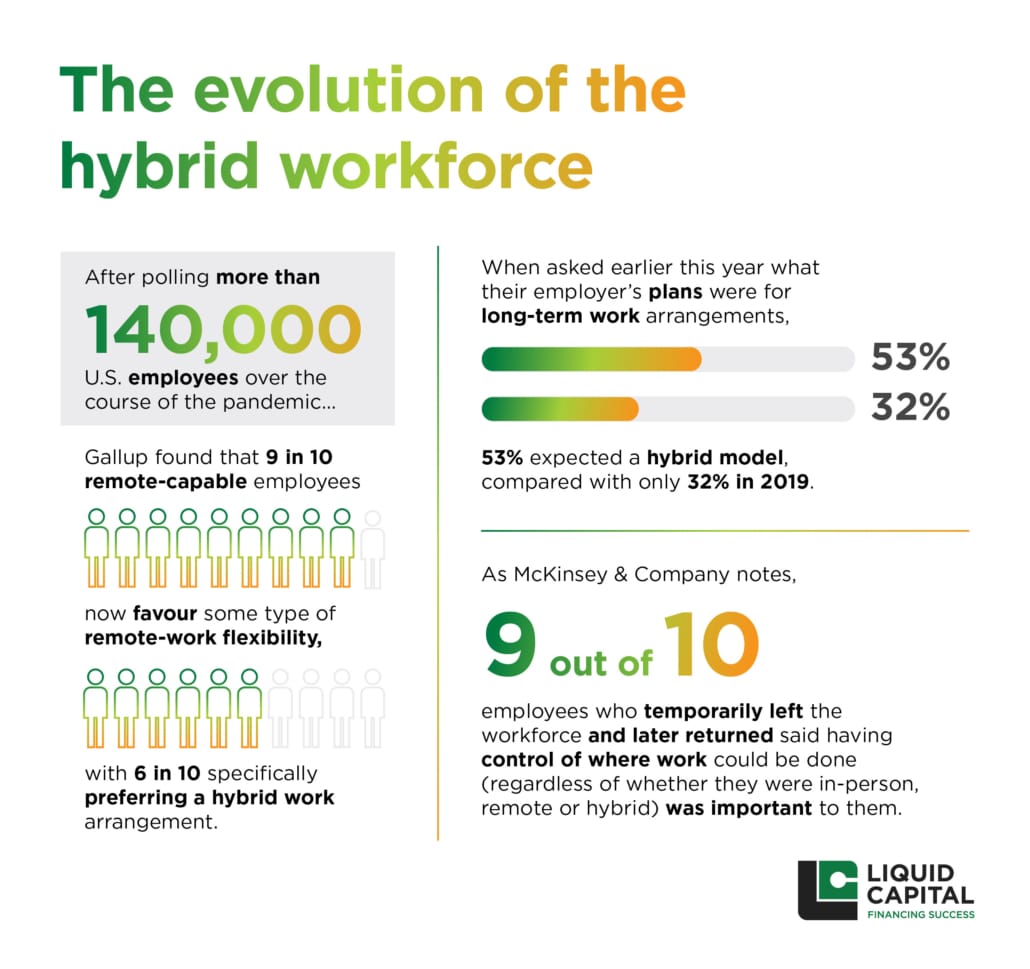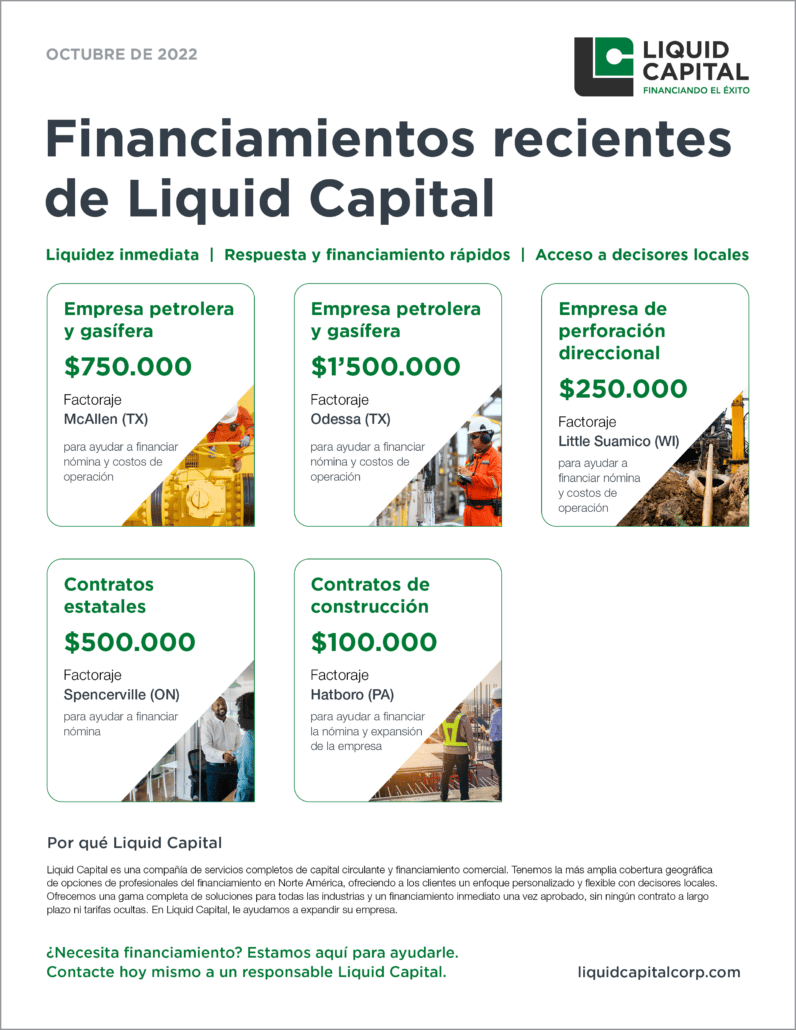Here to stay: The benefits of a hybrid workplace
For companies to get the most out of the benefits of a hybrid workplace, leaders and managers need to ensure their teams are properly supported.

While the virtual office was a lifesaver for many companies during the pandemic, it’s clear that it isn’t going anywhere anytime soon — with many employees and business leaders readily embracing the advantages of a more flexible approach to work.
For many businesses, remote work has become part of a hybrid model, as both employees and management favour some face-to-face time while still being able to take advantage of the flexible hours and lack of commute that a partially offsite schedule can provide.
After polling more than 140,000 U.S. employees over the course of the pandemic, Gallup found that nine in 10 remote-capable employees now favour some type of remote-work flexibility, with six in 10 specifically preferring a hybrid work arrangement.
When asked earlier this year what their employer’s plans were for long-term work arrangements, 53% expected a hybrid model, compared with only 32% in 2019.
As McKinsey & Company notes, nine out of 10 employees who temporarily left the workforce and later returned said having control of where work could be done (regardless of whether they were in-person, remote or hybrid) was important to them.

But while the upsides of a hybrid work arrangement are significant – think greater choice in terms of where and when employees can do their work, leading to more work-life balance — in theory, it isn’t without its potential downsides.
Left unchecked, employees working remotely might feel disconnected from the team. They may also end up working longer hours as they’re connected to the office 24/7. This can cause overwhelm or professional burnout if steps aren’t taken to address these issues.
For leaders, as the Harvard Business Review (HBR) explains, maintaining strong ties with your employees remotely is critical – but building and keeping your team connected and aligned on a shared vision is more challenging in a hybrid environment. With the ability to measure their output easier now with new digital tools, the traditional management approach of “command and control” is also counterproductive for a hybrid workforce.
Here’s how to help your team thrive in this new hybrid working world:
Allow for choice and flexibility
Within your hybrid workforce, employees will likely have different plans, with some favouring more in-person work, and others opting for as much remote as possible.
Having a hybrid model with set days in the office provides a false sense of flexibility – in reality, it’s crucial for leaders to give employees control of where they work as not all elements of their job likely need to be done in person.
Amazon decided against a one-size-fits-all approach to hybrid working for its corporate roles, where, instead of setting out how many or which days employees need to be in the office, this was left up to individual teams with the idea that any approach chosen would eventually be evaluated by customers.
Foster strong and clear communication
As Gallup notes, in a hybrid environment, there is a risk of isolation, neglect of remote workers and ‘culture erosion’ – so managers need to double down on clear and strong communication and team-building.
With flexibility increasing, leaders need to be more proactive about clearly communicating with employees about their priorities and progress. Having designated checks-in regularly ensures remote workers feel like part of the team.
Giving employees a compelling reason to come to the office occasionally can help you strengthen team-building efforts. Activities such as having a monthly professional development day, guest speakers or in-house childcare can entice employees to work from the office. Looking at ways to reduce the barriers for employees to come into office can also help, such as offering a transportation allowance.

Move away from the old model
Hybrid workplaces should move away from simply reproducing how things are done in-person – for example, holding endless virtual meetings — towards a new approach that uses technology to involve all team members in the discussion.
When one retail bank was designing its hybrid work arrangement, it quickly realized the model had retained too many traditional meetings. When the bank eliminated some of these meetings and made others asynchronous, it helped to boost productivity.
More flexible tech tools and workshop rooms that allow for collaboration from both in-person and remote employees can replace traditional white-boarding. Meanwhile breakaway rooms can help all team members participate in problem solving and innovation and help stave off isolation and ‘Zoom fatigue’.
Set the parameters
Flexibility can be a double-edged sword for some – while employees can work when they want, removing the idea of a traditional 9-5 can blur the lines between work and home life.
To help employees avoid this, some organizations, have established rules of engagement around hybrid work such as mandating ‘no-meeting zones’ at certain times of the day. This allows employees blocks in their calendar for other activities, like exercise or ideation time. Others have put email disclaimers in place, setting the expectations around responding to emails only during business hours.
Along with letting employees decide how, when and where they work, Salesforce’s hybrid work strategy allows individual teams choose how they communicate, with some implementing ‘no meeting Fridays,’ for example and holding an “Async Week” where employees cancel routine meetings to allow for more focused work.
Success takes commitment
A successful hybrid approach doesn’t just mean logging on from outside the office a few days a week – for teams to ace this strategy, it takes a change in leadership style, a focus on communication and tech tools aimed at bringing everyone together.
In practice, as Gartner explains, companies benefit from the inclusive options offered by the hybrid approach, no matter where employees are working.
At the same time, it’s important to limit synchronous work to certain blocks and let employees take charge of their work schedules. By taking a flexible approach that shifts away from the traditional office model, you can help your hybrid work team succeed – whether they’re in the office or not.
Up next: Lead better with these top podcasts for entrepreneurs

















